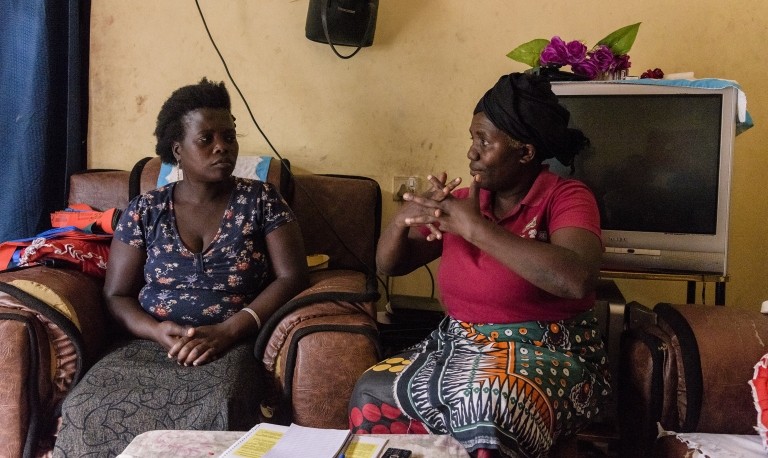Feature
For Tanzanian children living with HIV, simple stickers help ensure they remain on treatment

Identifying children at risk of HIV and getting them tested is a critical step in combatting pediatric HIV. For children who test positive, the next vital step is to ensure that they have access to treatment and adhere to their medication.
The USAID Kizazi Kipya project works with local organizations, the government and community health workers to ensure high-quality services are available to HIV-infected and vulnerable children and adolescents. We also track missed appointments to help kids stay on treatment.
One key to our success is stickers.
Each quarter, Pact staff, in collaboration with civil society organization staff, District Social Welfare Officers and District AIDS Control Coordinators, visit facilities that provide HIV services to kids to assess services they offer to orphans and vulnerable children (OVC). We evaluate the referral system – both referrals to and from the facility – and the role of community case workers, or CCWs, in ensuring referrals of OVC and caregivers to the facility are tracked and completed. This is critical information for ensuring children and caregivers who are HIV-positive adhere to antiretroviral therapy, keeping them in good health and virally suppressed.
Our sticker system makes it easy for the facility to identify the children and caregivers enrolled in the project. The stickers have been labelled with the big “K2,” which stands for Kizazi Kipya.
Kizazi Kipya provides each facility with a set of stickers to place on the client’s file. The sticker model helps to determine and analyze the number of clients at the respective facility, the number of clients enrolled in Kizazi Kipya and other categories, including missed appointment, lost to follow-up and death cases, since files are arranged according to the clinical attendance and status of the client.The sticker helps staff at the facility know how to reach CCWs for a child or caregiver who may not have returned for a follow-up, a child with high viral load, or with any critical issues that require project support.
With quick identification and response, case workers can immediately locate children who miss their appointments and escort them back to care and treatment.
During one of the supervision visits in the first quarter of this year, the team visited Mapera Care and Treatment Center in Mbinga District’s Mapera Ward. With the help of the sticker system, we could see that the center had 67 children aged 0-17 living with HIV, and 63 (94%) of those children were enrolled in the Kizazi Kipya project. By the third quarter of that year, three children from Mapera were transferred to their nearby health facilities. The rest were enrolled in Kizazi Kipya and 100% of them were on care, with none lost to follow-up.
The center's officer in charge said they use the K2 stickers to identify children who've missed an appointment. Then, they find the CCW who serves the child and caregiver so that they can follow up with a home visit. With quick identification and response, CCWs can immediately locate children who miss their appointments and escort them back to the center where they receive care and treatment that includes receiving viral load results.
“It is our culture to call Community Case Workers once missed clients/lost-to-follow-up are identified. They go further to trace and bring back to care even clients who are not in the project," the officer in charge says. “The model assures easy observation of the clients in the project and not in the project. This helps to identify the number of pediatrics not enrolled in the project, and I use it to call CCWs to link them to caregivers for enrollment.”
With the help of Kizazi Kipya’s sticker model, as of today, all children living with HIV from Mapera have been enrolled in the project, and CCWs continue to serve their households through dedicated case management.